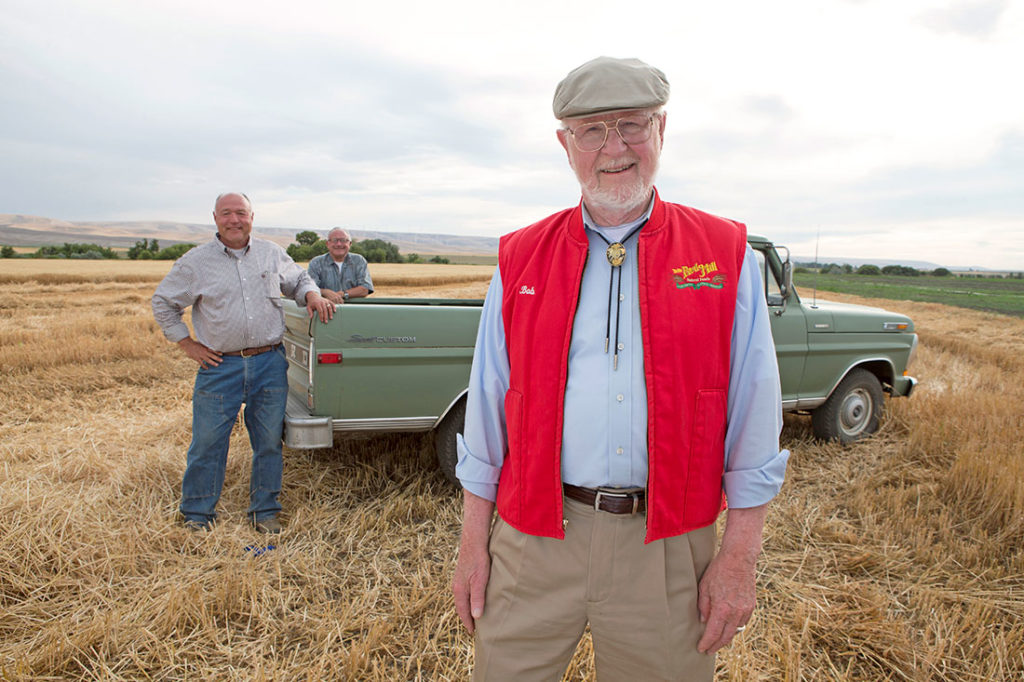Bob Moore was supposed to be retired when he launched the biggest entrepreneurial achievement of his life.
A serial entrepreneur, Moore built a string of business ventures, including owning gas stations in the 1950s, but a new path was born in 1961 when Bob and wife, Charlee, became captivated by a way of eating that was based on whole foods. Sourcing these healthier ingredients meant traveling to specialty food stores back then, but the two were dedicated to finding and developing whole grain recipes for their family.
“Always in the back of my head was this thought, ‘I wonder if I could make a living doing this?’” Moore says.
To make this dream come true, the couple started a milling business in 1972 in Redding, California, around giant, antique quartz stones from the 19th century that they used to grind grains.
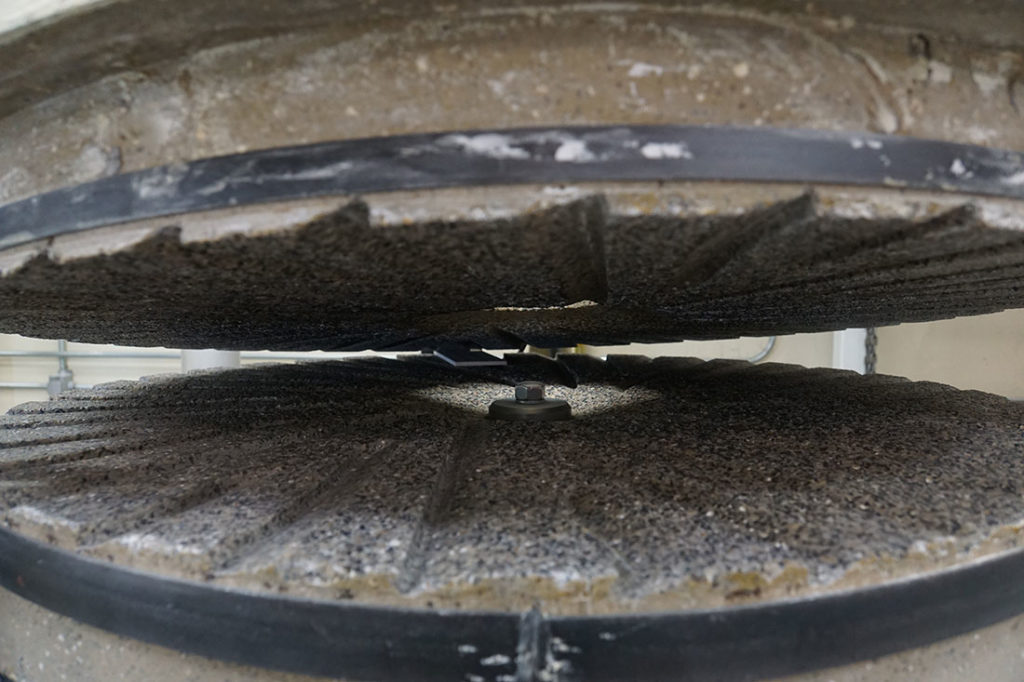
Six years later, after leaving the mill to their sons, the couple retired to Oregon, where they planned to spend their golden years learning how to read the Bible in its original Greek and Hebrew languages.
And then Moore stumbled on an old, abandoned mill a mere mile or two from their new home.
“I couldn’t believe it,” Moore says. “I didn’t know there was another one in the world. It had been sitting there, closed for 25 years, and it really boiled down to not being able to resist it.”
Only a few months into retirement, Moore was back in business and Bob’s Red Mill was born in 1978.
Modern milling, the ancient way
Local news stations were enamored with the heartfelt story of a historic mill restored, and Moore’s charismatic personality and whole-grain evangelism captured consumer attention. Two weeks after opening, Moore looked out the store window to see that the parking lot was full.
Bob’s Red Mill was on the leading edge of a cultural whole foods movement. Locally, the company was thriving, but true momentum came after major grocery chains discovered the whole grain products at trade shows. Distribution contracts were put in place, grocery stores were eager to stock Moore’s unique products and business was booming.
Then, in one night, after 10 years of successful business, it all went up in flames—literally. In mere minutes, and under cover of darkness, an arsonist destroyed the mill—what Bob and Charlee had spent decades learning to build and operate.
“You’re thinking in the back of your mind, ‘My whole world is burning down and what will I do?’” Moore says. “As with any situation, if you’re open to continue, there’s always a way to keep going. So, we went back to work.”
Bob’s Red Mill relocated to a larger 20,000-square-foot building, then a 50,000-square-foot warehouse, as customers like grocery chain Fred Meyer waited patiently for him to rebuild.
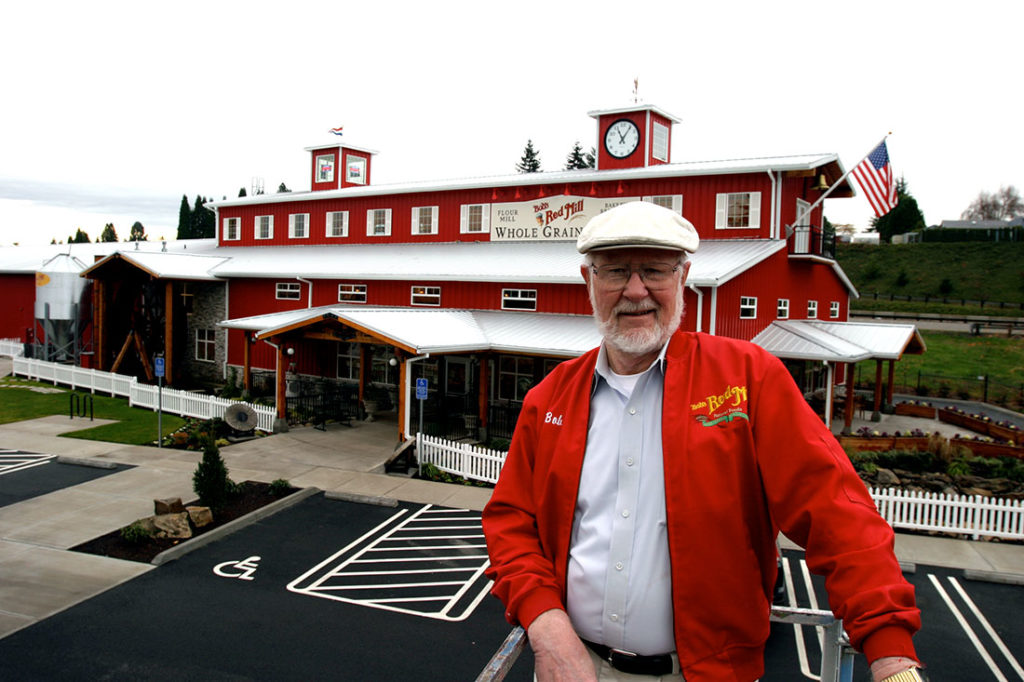
“We modernized everything except the mill part,” Moore says.
The company continued to grow exponentially, and today requires a combined 800,000 square feet of office, milling and warehouse space for its operations. But the core of its processes remain reliant on the slower, antique method of grinding grains on millstones that Moore learned decades prior. It’s a meticulous process that churns out product slower than a more contemporary approach, but it’s also a juxtaposition that reflects Moore’s own leadership style. On one hand, he has scaled a truly enormous, efficient business that radiates a calculated and strategic vision. And yet, it is Moore’s down-to-earth personality, his jovial laughter and an old-world Biblical commitment to “doing the right thing” when it comes to his employees’ well-being that remain the heartbeat of Bob’s Red Mill.
#BossGoals
In the company’s earliest days, long before annual revenues climbed well beyond the $100 million mark where they reside today, investors from both inside and outside the company were knocking on Moore’s door. Employees were asking for a way to buy into the company and conglomerates wanted to buy him out, but Moore wasn’t ready to relinquish control of the business.
“I thought I [still] had some pretty good ideas, and I guess it turned out that I did,” Moore says.
Instead, he made the unconventional choice to launch a profit-sharing program in the early 2000s. Each month, Moore divvied up a portion of his profits among his then 25 employees according to their tenure and hourly wage.
“That to me was fundamental and basic,” Moore says. “Yeah, I could have put the money in my pocket. I might have even been able to keep my people, but it just seemed like the right thing to do.”
It didn’t take long for his employees to see a direct link between their efforts, the company’s bottom line and their own profit-sharing checks, but Moore wanted to involve them even more. Slowly, he worked to incorporate an Employee Stock Ownership Plan (ESOP). He couldn’t afford to do it all at once, so he gave the employees one-third of the company at a time over the course of a decade, until Bob’s Red Mill was a 100% employee-owned company in 2010. Today, all company stock is owned by employees, and when they leave, the company buys it back from them.
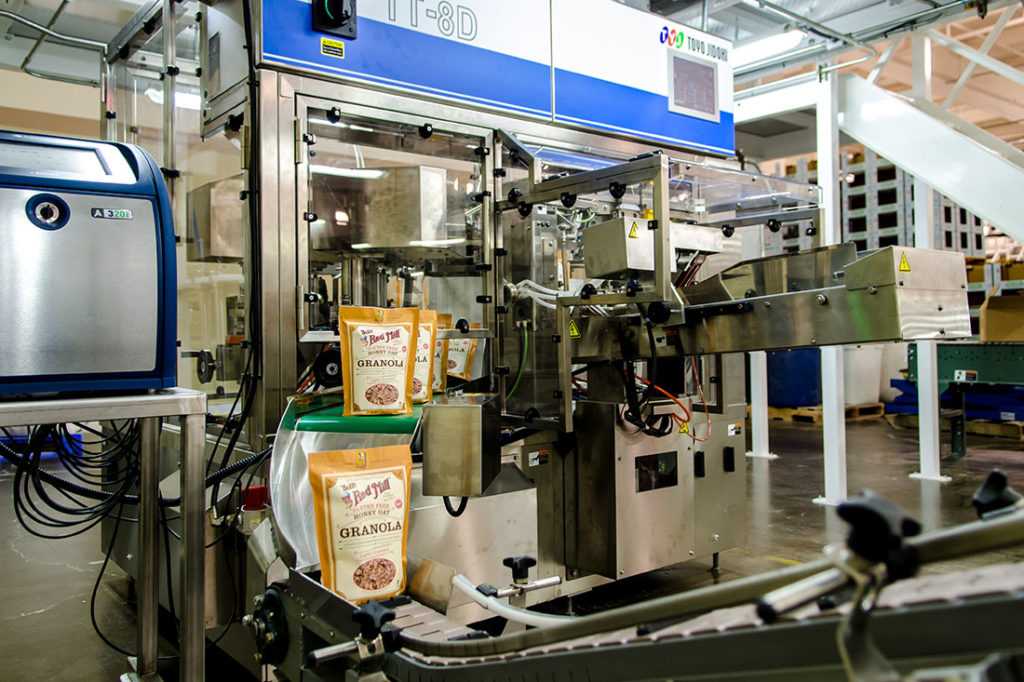
This employee-ownership choice hasn’t proven popular among many competitors. It’s common—even expected—that company founders in the same echelon as Moore would become extraordinarily wealthy without any obligation to spread that wealth to lower ranking members of the staff. It is, after all, Bob’s Red Mill. Would anyone blame him for keeping the spoils of his hard work and ingenuity to himself? But Moore says staying aware of who keeps an operation growing is vital to its success.
“I couldn’t do this without 750 people,” Moore says, “so why should I take it all?”
Reimagining retirement
At 93, Bob is still an active member of the company’s executive team. He comes to work every day, starting with a steaming bowl of his signature steel cut oats at his desk with long-time assistant Nancy, and then gets to work on projects. Each day involves greeting employees, staying informed on the previous day’s sales numbers and meeting with the company’s CEO and CFO to do his share of keeping the company on track.
Retirement, he believes, is doing all the things you’ve wanted to do but couldn’t because you were working. “There’s not too many things like that in my life,” Moore says.
Moore does have interests outside of the mill’s walls, including an exercise regimen, a voracious reading habit, a travel schedule and a love for playing the piano. All of these elements, including a lifelong love story with wife Charlee, who passed at age 90, have allowed him to crack the code on longevity in business. But while many people see retirement as their great escape, for Moore, work is the thrill he chases.
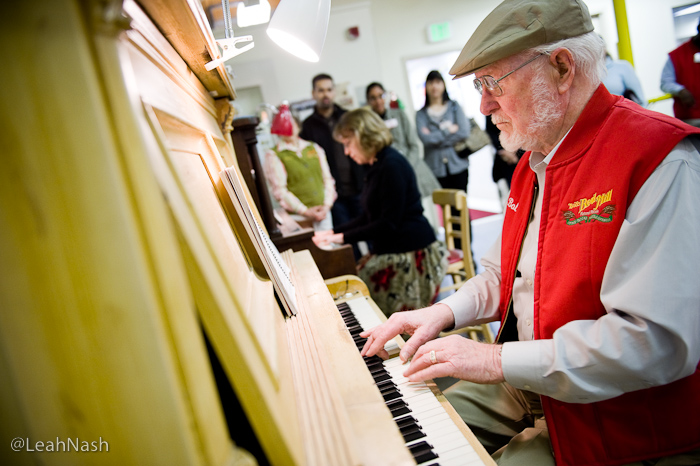
“I’ve enjoyed all of this—the energy, the creativity, the success,” Moore says. “Success is so sweet. It really is sweet.”
More than four decades after launching Bob’s Red Mill, that success is undeniable. From the outside looking in, however, it can be easy to wonder how his method—a stark contrast from so many large operations—could be so effective. Most titans of industry hoard power and wealth, but Moore, it seems, is actively pursuing ways to rid himself of both.
Through the ESOP, he gives away a good measure of his power and control to his employees, but that action appears to have empowered him as a trusted leader. Multi-decade careers with Bob’s Red Mill are common.
Every month he hands over a hefty slice of his own profits, but that generosity has only increased his return. The company’s value and revenues continue to climb.
“Big companies swallow little companies, and bigger companies swallow big companies,” Moore says. “This is a love of power and money and, honestly, the best way to break out of that is to have some kind of faith that you’ll be taken care of if you work and share success with the people who make it possible.”
Moore’s name and recognizable smile now line grocery store shelves around the world. It’s one more uncommon approach in business that he insists is important for leaders: refusing to hide behind the brand and truly “stick his neck out,” as he describes it.
“My image, in a sense, is a way of answering, ‘Who is responsible for this product?’ And there’s my picture—I am responsible,” Moore says. “I don’t know how much longer I’ll be personally responsible, but as of today, I’m still responsible, and I hope you like my products.”



